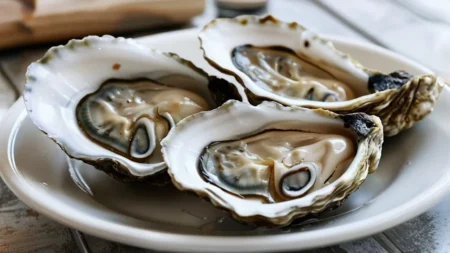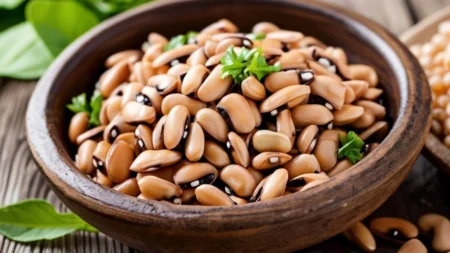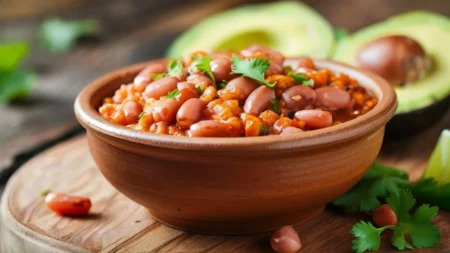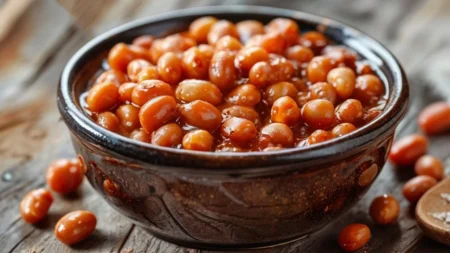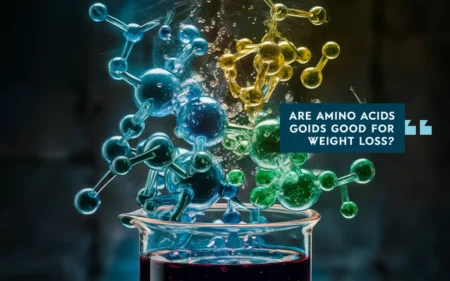Berberine (BBR) is a natural compound found in plants. It can make our bodies produce more heat, which helps burn energy. This is key in fighting obesity.1
BBR has been shown in many studies to change white fat into a type that acts more like brown fat. It also makes our fat tissues, both white and brown, more active at creating heat. This leads to burning more energy. The process involves special proteins called AMPK and PGC-1α, which are important for this fat transformation and creating more energy cells.1
Because BBR increases heat production in our fat tissues, it could be helpful against obesity and other metabolism issues.1
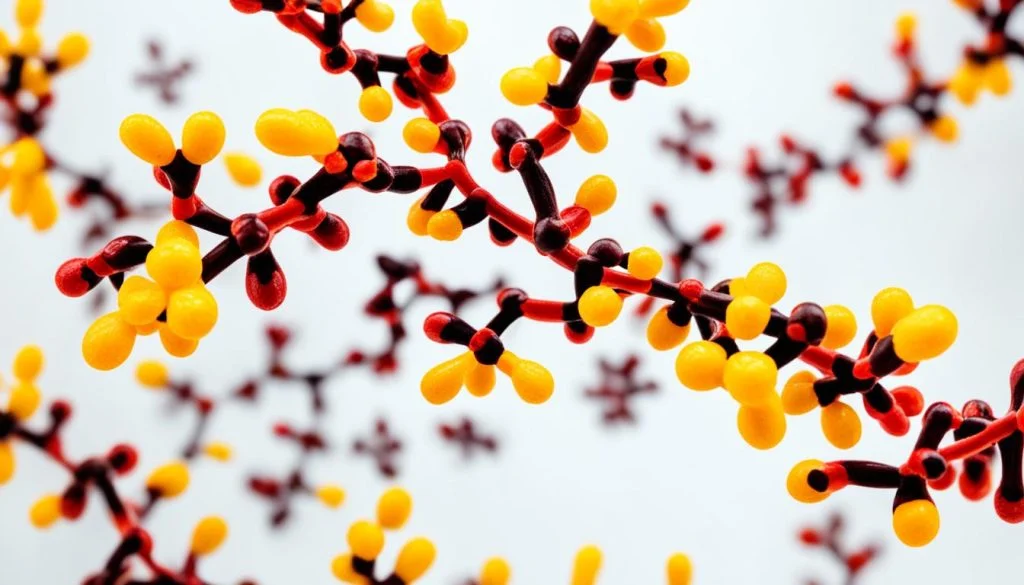
Key Takeaways
- Berberine (BBR) is a natural compound that can activate thermogenesis in both white and brown adipose tissue.
- Thermogenesis, the process of heat production, can increase energy expenditure and help combat obesity.
- BBR promotes the development of brown-like adipocytes, induces thermogenic gene expression, and enhances whole-body energy expenditure.
- The thermogenic effects of BBR are mediated through the activation of key regulators like AMPK and PGC-1α.
- BBR has the potential to be a therapeutic target for the treatment of obesity and related metabolic disorders.
Introduction to Berberine and Thermogenesis
Berberine (BBR) is a natural chemical found in plants like Coptis chinensis in China.1 For hundreds of years, it has been used in Chinese medicine to help with things like diarrhea. Now, we know it also has benefits for metabolism.2
What is Berberine?
Berberine is a special compound. It can make the body produce heat in its brown and white fat tissues.2 This heat-making process is called thermogenesis. It relies on these special fat tissues and cells.1
Thermogenesis and Its Role in Energy Expenditure
Special fat tissues and cells, like BAT and beige/brite adipocytes, can create a lot of heat. They have a key protein called UCP1 that helps turn energy into heat instead of storing it as fat.1 Making more heat and using energy better can help fight obesity. This makes thermogenesis a great target for treating metabolic disorders.
Berberine’s Potential in Combating Obesity
BBR can trigger thermogenesis in different fat tissues. Because of this, it’s seen as a potential way to treat obesity and its related issues.1 By making the body burn more fat and use more energy, BBR might help fight weight gain and diseases like type 2 diabetes.1 Learning how BBR works could help find new ways to manage obesity and its effects.
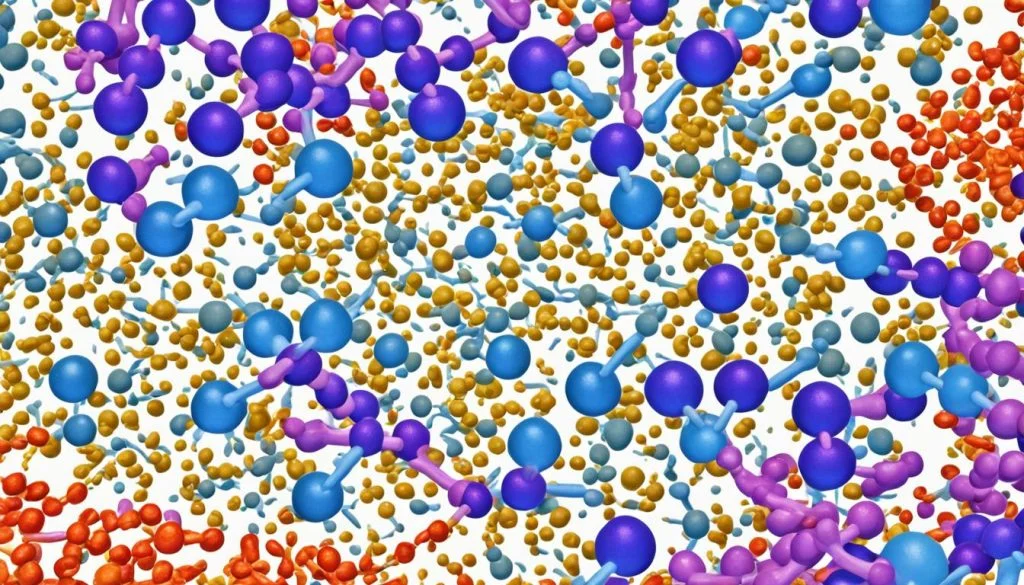
berberine activates thermogenesis in white and brown adipose tissue
Research shows that berberine (BBR) can boost brown adipose tissue (BAT) activity and size. This tissue type is full of mitochondria and UCP1. It’s vital for generating heat without shivering.3 Treating with BBR ramps up the genes that create heat, like UCP1, in BAT. This boosts how much heat and energy the body uses.3
Berberine’s Effects on Brown Adipose Tissue (BAT)
BBR boosts BAT’s ability to generate heat by turning on special genes, through things like AMPK and PGC-1α. These are critical for building brown fat cells and more mitochondria.4
Berberine’s Role in Inducing Browning of White Adipose Tissue (WAT)
BBR doesn’t just help BAT. It also encourages white fat to form beige fat, a type that’s good at burning energy. This results in more energy use.4 By doing this, BBR turns some white fat cells into bearers of UCP1, the crucial heat-making protein. This shift from white to beige fat is called browning.4 The browning due to BBR is seen as a way to up overall heat generation and fight obesity.4
AMPK and PGC-1α: Key Mediators of Berberine’s Thermogenic Effects
The ability of BBR to promote heat production mainly relies on AMPK and PGC-1α. These two work together to make more mitochondria and up the heat-making genes.4 AMPK plays a big role in keeping cell energy in check and kicks off the making of more mitochondria and turning on UCP1 with the help of PGC-1α.4 By activating AMPK and PGC-1α, BBR kickstarts the growth of brown fat and the browning of white fat, increasing heat creation.4 This process is crucial for BBR’s impact on creating heat and fighting obesity.5
Metabolic Benefits of Berberine-Induced Thermogenesis
Weight Loss and Improved Insulin Sensitivity
BBR treatment boosts thermogenesis, which means you burn more energy. This helps lower body weight and makes your body cope better with insulin, both in animals and humans.1 For instance, in obese mice, BBR made them lose body weight and fat. It also made them more resistant to cold by ramping up their energy use. In overweight people with NAFLD, taking BBR for a month increased their ‘good fat’ activity. Not only did they lose weight, but they also got better at processing insulin.1 All these benefits suggest BBR could be a game-changer against obesity and its related health issues.
Increased Energy Expenditure and Fatty Acid Utilization
BBR kickstarts thermogenesis, which ramps up your energy use. This leads to higher oxygen use and more CO2 output, showing increased energy spent. It changes the way your body burns energy, preferring fats over carbs as fuel.1 This shift helps in burning fat and spending more energy, supporting weight loss and better metabolic health.1 To sum up, BBR’s power to increase thermogenesis, reduce fat, and boost energy use points to its great potential in treating obesity and metabolic issues.
Clinical Implications and Future Directions
Studies show that berberine (BBR) could be a key treatment for obesity and its related issues. These include type 2 diabetes and fatty liver disease.13 BBR triggers heat production in both brown and white fat. This increases calorie burn and helps lose weight. It also makes the body respond better to insulin.13
BBR’s talent in exciting brown fat is a game-changer. Unlike many drugs for obesity, BBR works in a unique way.32 Scientists are investigating if combining BBR with other treatments can improve its effects more.13
Berberine as a Potential Therapy for Obesity and Metabolic Disorders
Research on BBR in animals has provided lots of insights. However, big clinical studies on people are necessary to confirm these findings.3 Scientists are also figuring out the best ways to use BBR for the maximum benefit. This includes its dose, form, and how it’s taken to lessen side effects.13
Ongoing Research and Challenges
One big challenge is that not everyone reacts the same to BBR, especially in stimulating brown fat activity.32 Exploring how BBR works with other treatments or drugs is another focus.
Combining Berberine with Other Therapies
Scientists are looking into combing BBR with different treatments to boost its metabolic advantages and therapeutic impact.13 For instance, they’re studying how it works with exercise, dieting, or other drugs. These also target ways to balance energy and manage weight.32
Mixing BBR with other actions might offer stronger and lasting benefits for weight, insulin levels, and overall health.13 Figuring out the best mixing plans and how they work is essential. This is key for improving treatments against obesity and related health problems.132
Conclusion
Berberine (BBR) is a natural compound. It can make both brown and white fat tissues burn calories through heat production. This process can help fight obesity and related health issues.1 BBR helps create fat cells that burn energy. It also boosts overall energy use, which is important for fighting obesity and its issues.1 It works by lighting up a certain pathway that’s crucial for these effects.1
Studies have found that BBR boosts the amount and function of brown fat. This leads to losing weight and better use of insulin in people who are overweight or obese.6 Scientists are looking into the best ways to use BBR. They’re studying if it’s best alone or with other treatments for obesity issues.6
BBR’s power to increase heat and use fat shows its promise as an anti-obesity treatment.1 By using BBR’s abilities, researchers hope to fight obesity and its health problems better. They aim to find new methods to address this major health issue.
FAQ
What is berberine (BBR)?
Berberine (BBR) is a type of natural plant compound. It comes from plants used in Chinese medicine, like Coptis chinensis. For centuries, it’s been used to help with health issues. Recently, it’s been found to help with how the body uses energy.
How does berberine activate thermogenesis?
Berberine makes the body produce more heat in some special types of fat. This heat production, called thermogenesis, happens in both brown and white fats. It also helps create a type of fat that acts like brown fat.
This whole process boosts the body’s overall energy use.
What are the key mechanisms behind berberine’s thermogenic effects?
The special heat-making effects of berberine work through certain regulators. These include AMPK and PGC-1α. They help create special fats and make more mitochondria. This process is a big reason why berberine fights obesity.
How does berberine-induced thermogenesis benefit weight management and metabolic health?
Berberine makes the body use more energy. This leads to weight loss and better sugar control. Studies in both animals and humans show these benefits. It might be a good treatment for obesity and related health problems.
What are the current clinical implications and future research directions for berberine?
Berberine has a lot of potential for treating obesity and its effects. It shows hope in handling diseases like type 2 diabetes and fatty liver disease. Future research aims to use it better, alone or with other treatments. This research also looks at its safety and long-term use.
Source Links
- https://www.nature.com/articles/ncomms6493
- https://www.ncbi.nlm.nih.gov/pmc/articles/PMC6291723/
- https://www.ncbi.nlm.nih.gov/pmc/articles/PMC6565685/
- https://www.sigmaaldrich.com/AR/en/tech-docs/paper/542788
- https://connect.h1.co/article/725246721
- https://www.ncbi.nlm.nih.gov/pmc/articles/PMC8375237/






